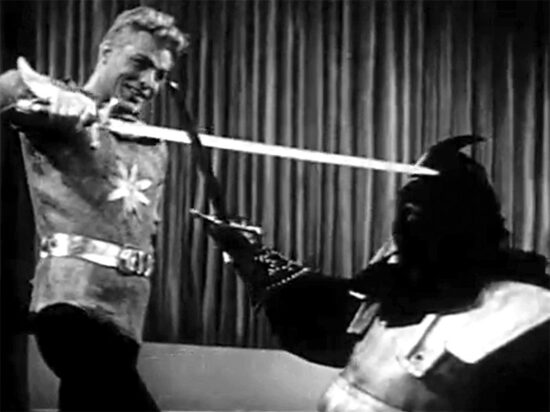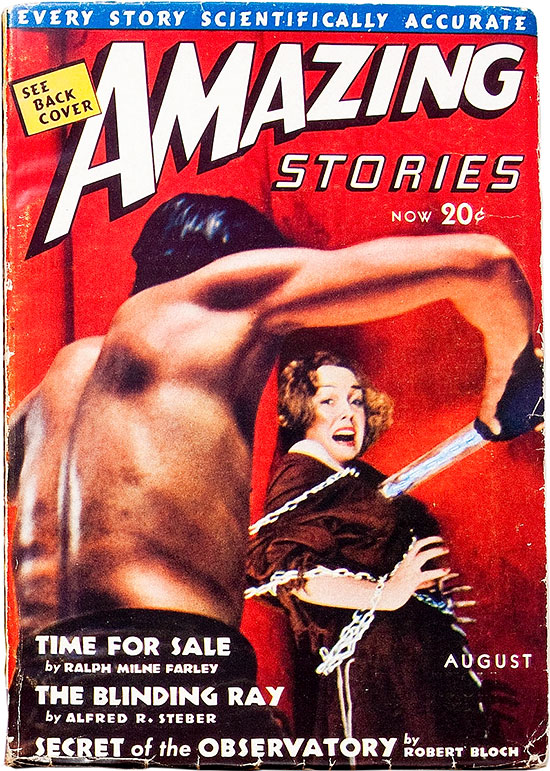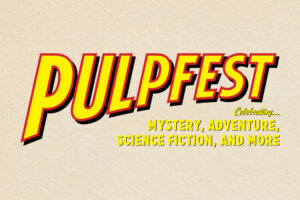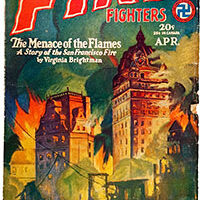George Lucas has made it very clear that the Star Wars series was heavily influenced by films of the 1930s and ’40s. But I don’t recall ever seeing a lightsaber-like device in any film from that era (or any film prior to the original Star Wars, for that matter).
Movies from that time used traditional swords — even science-fiction adventures. Take the 1936 movie serial Flash Gordon for instance. In addition to rayguns, swords figure in the combat, such as when Flash (played by Buster Crabbe) uses one in a “tournament of death” in Chapter 8 (shown below).

Lightsabers — or “laser swords,” as Lucas originally called them — had their antecedents in the pulp magazines.
Kristen Brennan traces the influences on Star Wars’ lightsabers in part of her online series “Star Wars: Origins.” She points out “Kaldar, Planet of Antares,” a story by Edmond Hamilton that was originally published in Magic Carpet Magazine (April 1933), as one of the earliest examples of such a device.
(The story is incorrectly linked to Weird Tales by Brennan, as well as by Chris Taylor in his 2015 book, How Star Wars Conquered the Universe: The Past, Present, and Future of a Multibillion Dollar Franchise. The first two of Hamilton’s three Stuart Merrick stories ran in Magic Carpet in 1933, with the third appearing in its sister magazine, Weird Tales, in December 1935.)
Coincidently, Hamilton’s wife, Leigh Brackett, wrote the original draft screenplay for Star Wars, Episode V: The Empire Strikes Back, which I wrote about in a post last month.
Brennan also notes “Gather, Darkness!” Fritz Leiber‘s story, serialized in the May and June 1943 numbers of Astounding, also mentioned a lightsaber-like device. Though the story was illustrated on the cover for the May number, the “Rods of Wrath” weren’t depicted.
Let’s turn to the cover of Amazing Stories (August 1938). It’s the magazine’s second photographic cover, and credited to Jay Jackson and Harold Welch.

Robert Bloch‘s “The Secret of the Observatory,” his first contribution to Amazing, is featured on the cover. The following passage from the story is illustrated:
Then Marlin halted, frozen by the tableau he glimpsed through the intervening bars. There, against the wall of the cell, crouched Lois. And above her towered the giant Mongol, grinning insolently. And then Marlin saw what the glowing thing was he carried in his hand.
It was a peculiar, somewhat menacing weapon, glowing with strange radio-activity. Constructed with a blunt muzzle, a grip, and a thick butt. It made an efficient and mysterious looking instrument of torture. A sort of radium gun.
Even as he watched, the great, naked yellow arms were swinging up, pressing the horrible looking thing closer and closer to the white throat of the captive girl. What weird torture might not this thing, evidently another of Okida’s horrid inventions, inflict on the helpless girl? Would it burn deeply, perhaps even lead to a slow, tortured death from radium cancer—?
While Bloch doesn’t quite describe what we think of as a lightsaber (at least not the glowing blade; but the lightsaber’s hilt maybe), the cover certainly brings the Star Wars weapon to mind.
Was this the first visual depiction of a lightsaber?




Seems a stretch. On the other hand A. Hyatt Verrill’s novel “The Bridge of Light” would seem to anticipate the light bridge in Flash Gordon.
Who would’ve thought that one of the pulp antecedents of the Star Wars lightsaber was created by the author who gave us the horror classic “Psycho”? (later to be a masterpiece of cinematic horror by Alfred Hitchcock, of course!)